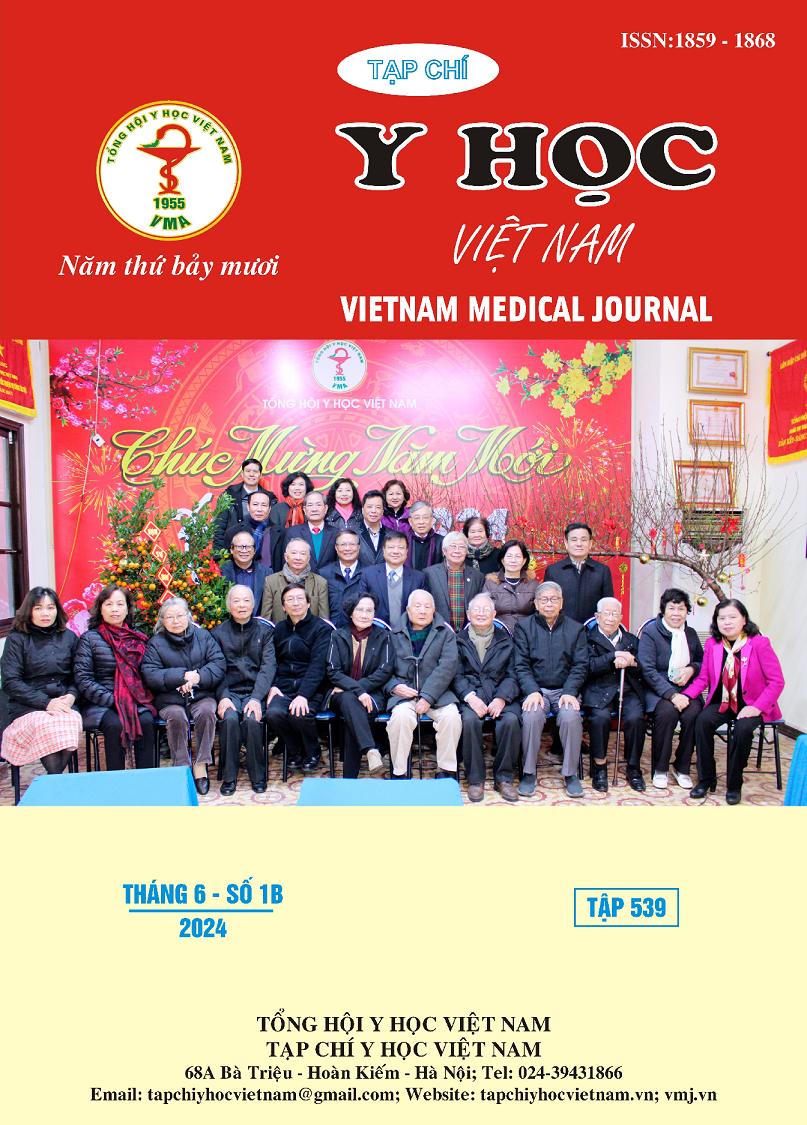LABIAL ALVEOLAR BONE THICKNESS AND SAGITTAL ROOT POSITION OF MAXILLARY ANTERIOR TEETH ON USING CONE BEAM COMPUTED TOMOGRAPHY(CBCT)
Main Article Content
Abstract
Objective of research: This study is aimed to assess the thickness of facial alveolar bone of anterior maxillary teeth and classify their relation to the alveolus in the sagittal plane following Kan’s classification in a group of VietNam population. Subject and research method: CBCT images of 70 patients were randomly selected from the CBCT database at BAO VE NU CUOI AN GIANG dental clinic. After recruitment, 406 teeth were used to measure facial alveolar bone thickness at three reference points: 4 mm apical to CEJ (P1), midpoint between 4 mm to CEJ and mid-root (P2), mid-root (P3). Results: The results revealed that most of the studied teeth exhibited a facial alveolar bone thickness less than 1 mm at all reference points. The mean facial bone thickness was between 0.71±0.51 and 0.95±0.48. The frequency distribution of sagittal root position was 89.66% in class I, 5.91% in class II, none in class III, and 4.43% in class IV. Conclusion: this study demonstrated that the anterior maxillary teeth have a high prevalence of thin facial alveolar bone wall, which may consider risking of soft tissue recession. However, the class I sagittal root position, which is favorable for implant-bone engagement, was the majority of this finding
Article Details
Keywords
facial alveolar bone, root position, CBCT, sagittal root position, immediate implant placement.
References
2. Allum SR. Immediately loaded full-arch provisional implant restorations using CAD/CAM and guided placement: maxillary and mandibular case reports. Br Dent J. Apr 12 2008;204(7):377-81. doi:10.1038/sj.bdj.2008.252
3. Hui E, Chow J, Li D, Liu J, Wat P, Law H. Immediate provisional for single-tooth implant replacement with Branemark system: preliminary report. Clin Implant Dent Relat Res. 2001;3(2):79-86. doi:10.1111/j.1708-8208.2001.tb00235.x
4. Qahash M, Susin C, Polimeni G, Hall J, Wikesjö UM. Bone healing dynamics at buccal peri‐implant sites. Clinical Oral Implants Research. 2008;19(2):166-172.
5. Braut V, Bornstein MM, Belser U, Buser D. Thickness of the anterior maxillary facial bone wall—a retrospective radiographic study using cone beam computed tomography. International Journal of Periodontics and Restorative Dentistry. 2011;31(2):125.
6. Kan JY, Roe P, Rungcharassaeng K, et al. Classification of sagittal root position in relation to the anterior maxillary osseous housing for immediate implant placement: a cone beam computed tomography study. Int J Oral Maxillofac Implants. Jul-Aug 2011;26(4):873-
7. Buser D, von Arx T. Surgical procedures in partially edentulous patients with ITI implants. Clin Oral Implants Res. 2000;11 Suppl 1:83-100. doi:10.1034/j.1600-0501.2000.011s1083.x
8. Spray JR, Black CG, Morris HF, Ochi S. The influence of bone thickness on facial marginal bone response: stage 1 placement through stage 2 uncovering. Ann Periodontol. Dec 2000; 5(1):119-28. doi:10.1902/annals.2000.5.1.119
9. Cho YB, Moon SJ, Chung CH, Kim HJ. Resorption of labial bone in maxillary anterior implant. J Adv Prosthodont. Jun 2011;3(2):85-9. doi:10.4047/jap.2011.3.2.85
10. Braut V, Bornstein MM, Belser U, Buser D. Thickness of the anterior maxillary facial bone wall-a retrospective radiographic study using cone beam computed tomography. Int J Periodontics Restorative Dent. Apr 2011;31(2):125-31.


